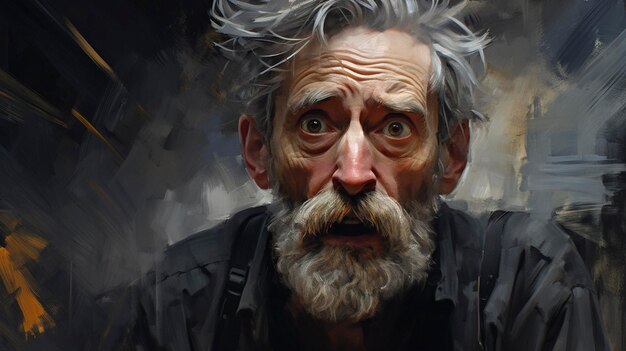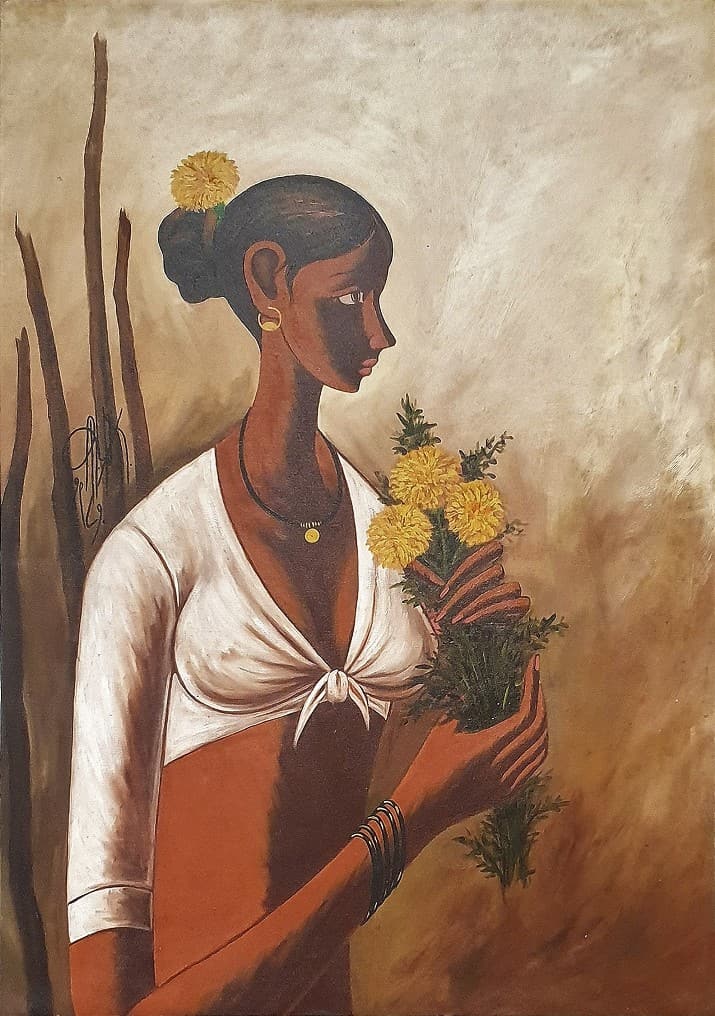The Evolution of Art: A Comprehensive Overview to Figurative Oil Painting
The Evolution of Art: A Comprehensive Overview to Figurative Oil Painting
Blog Article
The Development of Figurative Oil Paint: Understanding Its Historic Importance and Modern Interpretations
The advancement of figurative oil paint serves as a compelling lens via which to analyze the interaction between creative expression and historical context. Contemporary artists, attracting from this rich heritage, are currently reinterpreting the human number in means that challenge standard stories.
Origins of Figurative Oil Paint
The origins of figurative oil paint can be mapped back to the early Renaissance in Europe, especially in the 15th century. This duration noted a significant departure from the inflexible kinds and flat representations particular of middle ages art. Artists began to check out naturalism, stressing the human number and its emotional expression. The advancement of oil paint enabled for greater depth of shade and information, boosting the realistic look and vibrancy of their work.

In this transformative period, numbers were commonly illustrated within contextually rich environments, showcasing not just their physical qualities however also their mental states. Leaders such as Jan van Eyck and Titian took advantage of the medium's versatility, using layering strategies to accomplish luminosity and appearance. This technology assisted in the portrayal of intricate textiles and the subtleties of complexion, adding to the growth of portrait and narrative scenes.
Moreover, the Renaissance emphasis on humanism cultivated a recognition for individuality, which subsequently influenced musicians to produce even more relatable and vibrant numbers - figurative oil painting. Therefore, metaphorical oil painting arised as a powerful lorry for storytelling and psychological interaction, preparing for future creative activities and styles
Secret Historic Activities
Significant historical motions have actually shaped the development of figurative oil painting, each adding distinct ideologies and methods that increased the medium's possibilities. The Renaissance noted a turning point, stressing realism and the human type, with musicians like Leonardo da Vinci and Michelangelo pushing the limits of physiological precision and perspective. Following this, the Baroque age brought significant contrasts of light and shadow, exemplified by Caravaggio, that instilled spiritual themes with intense emotionality.
The 19th century presented Romanticism and Realistic look, where musicians such as Delacroix and Courbet challenged classic suitables, concentrating on individual expression and everyday life. The development of Impressionism better revolutionized the medium by highlighting the impacts of light and shade, bring about a departure from conventional representation.
In the early 20th century, motions like Expressionism and Cubism redefined metaphorical paint via abstraction and the expedition of psychological deepness. Each of these activities not only reflected the societal changes of their times but also laid the groundwork for contemporary interpretations. The interplay between these historical movements has created a rich tapestry of viewpoints and styles, influencing modern artists in their pursuit of capturing the human experience on canvas.
Techniques and Products Advancement

Throughout the Baroque duration, methods such as chiaroscuro and sfumato arised, improving the psychological resonance of metaphorical compositions. Musicians began to trying out glazes and impasto, adjusting texture and brightness. By the 19th century, innovations like the usage of pre-mixed paints in tubes revolutionized availability, allowing artists to repaint en plein air and capture the short lived results of light.
The 20th century saw the intro of synthetic pigments and mediums, which increased the palette and changed the uniformity of oil paints. The exploration of new application methods, such as scheme knives and brushes of varying tightness, more varied artistic expression. Collectively, these improvements reflect the advancing relationship between materials, methods, and the imaginative vision inherent in figurative oil painting.

Contemporary Interpretations
Contemporary interpretations of figurative oil painting reflect a dynamic discussion in between practice and technology, where musicians test developed norms and check out diverse themes. This evolution manifests in numerous means, as modern musicians blend classical techniques with modern browse around these guys principles, usually resolving social, political, and individual stories.
Numerous specialists draw ideas from historic works, yet they infuse their items with modern point of views, utilizing the human form as a lorry for discourse on society, identity, and sex. Artists progressively try out abstraction, distortion, and multimedias, which permits for a wider interpretation of the number and its context.
Furthermore, the usage of brilliant color schemes and non-traditional compositions usually serves to disrupt standard seeing experiences, prompting vital engagement from target markets. This change in focus extends beyond aesthetic appeals; it mirrors a growing recognition of the complexities of human experience in an interconnected globe.
As figurative oil paint continues to progress, it remains a crucial tool for checking out the subtleties of contemporary life, symbolizing both a regard for heritage and a commitment to modern idea. The result is an abundant tapestry of expression that reverberates with the complexities of the contemporary human problem.
Effect On Modern Art
The impact of figurative oil paint on contemporary art is profound, as it has actually consistently inspired a myriad of artistic motions and methods throughout the 21st and 20th centuries. From Expressionism to Surrealism and past, the expedition of the human number has actually remained a central theme, enabling artists to communicate complicated feelings and stories. This focus on metaphorical depiction has actually caused a re-examination of typical strategies, causing cutting-edge approaches that mix realistic look with abstraction.
Moreover, contemporary artists have welcomed metaphorical oil paint as a way to resolve political and social concerns, making use of the tool to test understandings of identity, gender, and culture. The resurgence of interest in metaphorical job in recent years reflects a longing for link in a significantly electronic world, where human experience and emotion are paramount.
Additionally, the discussion in between figurative oil painting and modern-day art appears in the works of artists such as Kehinde Wiley and Jenny Saville, that make use of historical referrals while instilling their pieces with modern significance. Eventually, figurative oil paint remains to form and redefine modern-day creative expression, underscoring its long-lasting importance in the art world.
Final Thought
The advancement of metaphorical oil painting emphasizes its historic significance and versatility throughout various imaginative activities. From the naturalism of the Renaissance to the stirring expressions of the Baroque and the innovative strategies of modernity, this medium has constantly changed. Contemporary interpretations reflect dynamic colors and non-traditional compositions, promoting vital interaction with political and social styles. Ultimately, figurative oil painting stays a crucial medium for exploring the human experience, resonating greatly in today's digital landscape.
The development of useful reference metaphorical oil paint offers as a compelling lens through which to take a look at the interaction in between imaginative expression and historical context.Significant historical motions have actually formed the advancement of metaphorical oil paint, each adding unique viewpoints and methods that broadened the tool's opportunities.As historic activities formed the trajectory of metaphorical oil paint, the strategies and products used by musicians have actually click to read more additionally undertaken substantial transformations. figurative oil painting.The impact of figurative oil painting on modern art is profound, as it has actually continually motivated a myriad of imaginative activities and techniques throughout the 21st and 20th centuries.The advancement of metaphorical oil painting highlights its historical significance and adaptability throughout numerous imaginative motions
Report this page